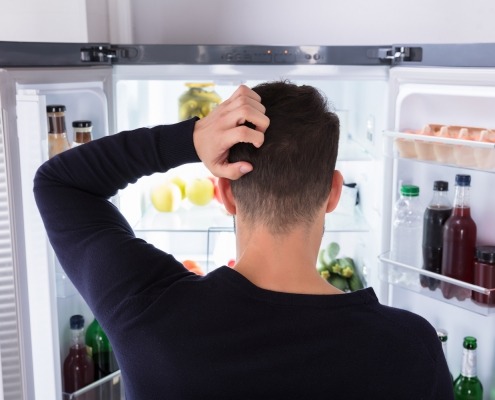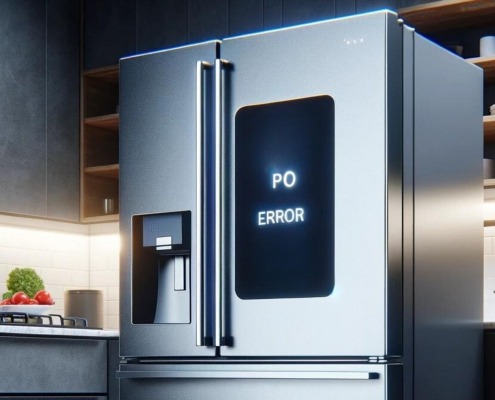Troubleshooting LG washing machine error code FE
Steven E / Thursday April 24, 2025
Is your LG washer displaying error code FE? Don’t worry, this is a problem that you can fix yourself without the need for a costly service call and we’re here to help you do it!
If you find out that you need any replacement parts for your appliance while you’re troubleshooting, you can enter your model number at AppliancePartsPros.com to order them. Most orders arrive in just two business days, and we have thousands of free guides to show you how to install your new parts.
The information in this article may not apply to your specific appliance model. We recommend consulting your manufacturer’s documentation or contact us with any questions.
What the error code means
The FE error is triggered when the washer detects that the tub has filled with more water than expected. This can occur due to a problem with the water inlet valves, the pressure switch, or the drain system. If the water inlet valves are stuck open or the pressure switch is malfunctioning, the washer may continue to fill the tub, leading to an overflow. Blockages or issues with the drain hose or drain pump can also prevent the water from draining properly, resulting in an overflow.
Safety precautions
When working on any appliance, remember to keep safety first. Here are some tips to keep in mind:
- Always power off and unplug your appliance or switch off the circuit breaker before attempting any maintenance or replacement work. This keeps you safe by preventing any risk of injury from electric shock.
- Wear insulated work gloves to protect your hands from sharp metal parts, pinching hazards and debris.
- Take your time and don’t rush while working to prevent accidents and personal injuries.
- Work in a well-lit area so you can clearly see and access the interior parts.
- Clear your workspace of clutter and other obstacles. Keep children and pets away from the work area.
- Never work on internal parts with bare wet hands. Make sure the work area is completely dry.
- Check your user manual to see if there are specific installation or safety instructions for your part or appliance.
- Be gentle when handling or removing parts. Excessive force might damage the appliance or cause injury.
- Wear safety glasses when working with chemicals, dust or cleaning large debris to prevent injury.
- If the appliance has recently been used, give it plenty of time for any heating parts to cool down before working on it.
- Take pictures or make a note of wiring terminals or other connections before disconnecting to prevent any problems with reassembly.
- When working with wires, avoid touching any exposed wires or terminals. If you need to touch a wire, use a non-conductive tool or wear insulating gloves to prevent electrical shock.
- Turn off the water supply at the outlet before beginning repairs to any appliance parts that hold water. Have towels ready for any residual water in the system when removing parts.
Troubleshooting steps
Check the water inlet valve
- Locate the water inlet valve, found at the back of the washer. There are typically two valves, one for hot water and one for cold water.
- Inspect the valves for any signs of damage, such as cracks, leaks, or obstructions.
- Test the valves by turning them on and off manually. Ensure they are opening and closing properly.
- If the valves appear to be faulty, replace them with new ones.
Check the pressure switch
- The pressure switch is responsible for monitoring the water level in the washer tub and signaling the control board when the tub is full.
- Locate the pressure switch, found near the tub or the control board.
- Disconnect the pressure switch and use a multimeter to test it. The pressure switch should read 0 ohms when the tub is empty and infinite ohms when the tub is full.
- If the pressure switch is not functioning properly, replace it with a new one.
Inspect the water level hose
- The water level hose connects the pressure switch to the tub.
- Check the hose for any cracks, kinks, or blockages that could prevent the pressure switch from accurately measuring the water level.
- Replace the water level hose if it is damaged or obstructed.
Check the drain hose and drain pump
- Ensure the drain hose is not kinked, clogged, or installed incorrectly, as this can prevent proper draining and lead to an overflow.
- Inspect the drain pump for any obstructions or damage that could be causing a drainage issue.
- Clean the drain pump and replace it if necessary.
Verify the control board and wiring
- The control board is responsible for monitoring the water level and managing the water inlet valves.
- Check the control board and its connections for any signs of damage or loose wiring.
- If the control board or wiring appears to be faulty, replace the affected parts.
Additional information
Thank you for reading! We hope this guide helped you get your LG washer working again.
If you have any other appliance repair needs or projects, don’t hesitate to explore our other troubleshooting guides and videos.
If you need replacement parts or some extra help with ordering them, grab your model number and head over to AppliancePartsPros.com, where you can chat with a pro, read our DIY blog and more.
Be sure to subscribe to us on YouTube and follow us on Facebook, Twitter and Instagram!
With nearly a decade of experience in providing top-notch customer service regarding appliance parts and repair, Steven enjoys sharing practical advice, troubleshooting tips, and interesting information to help readers stay informed.





 picture by Freepik
picture by Freepik